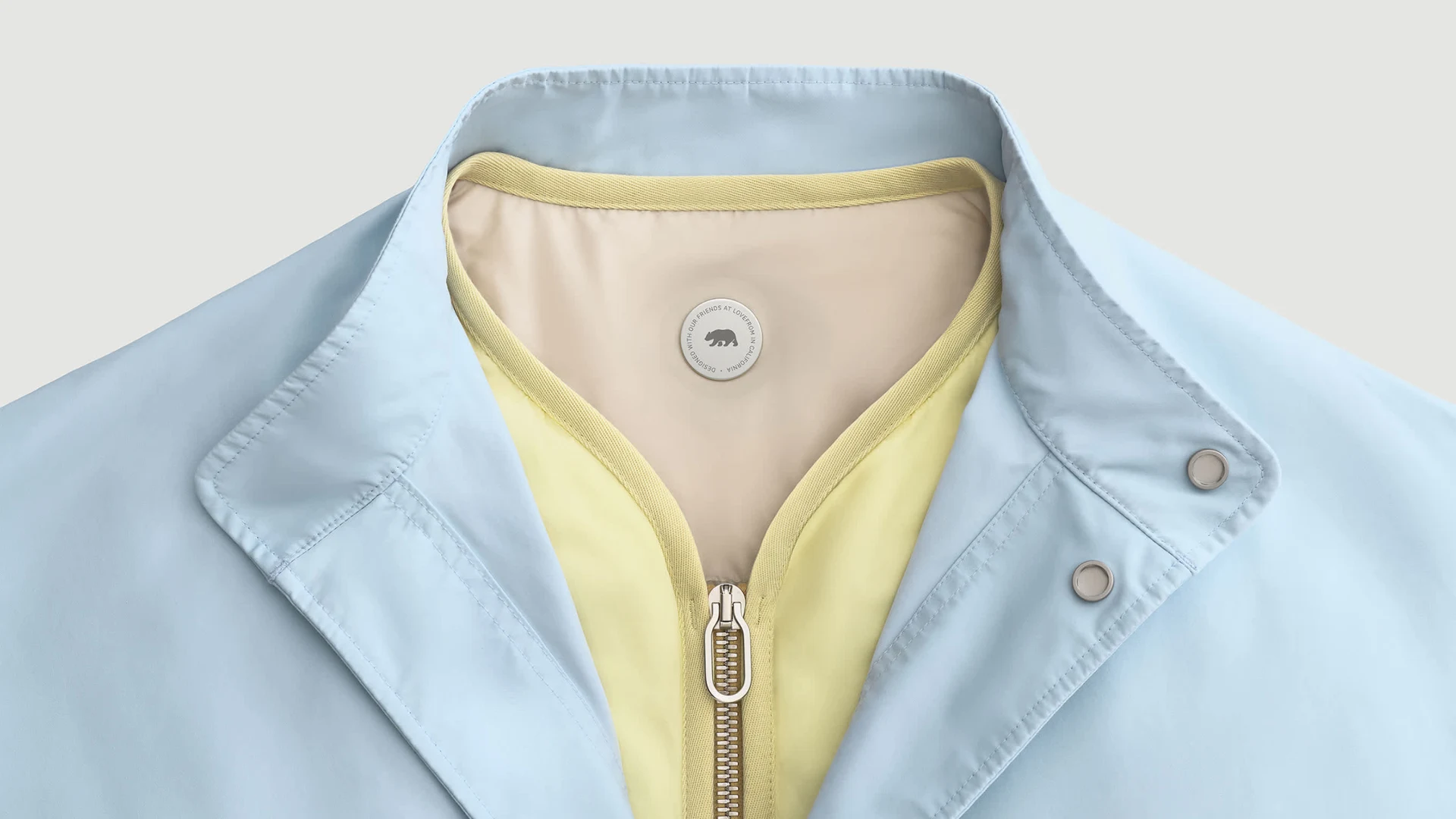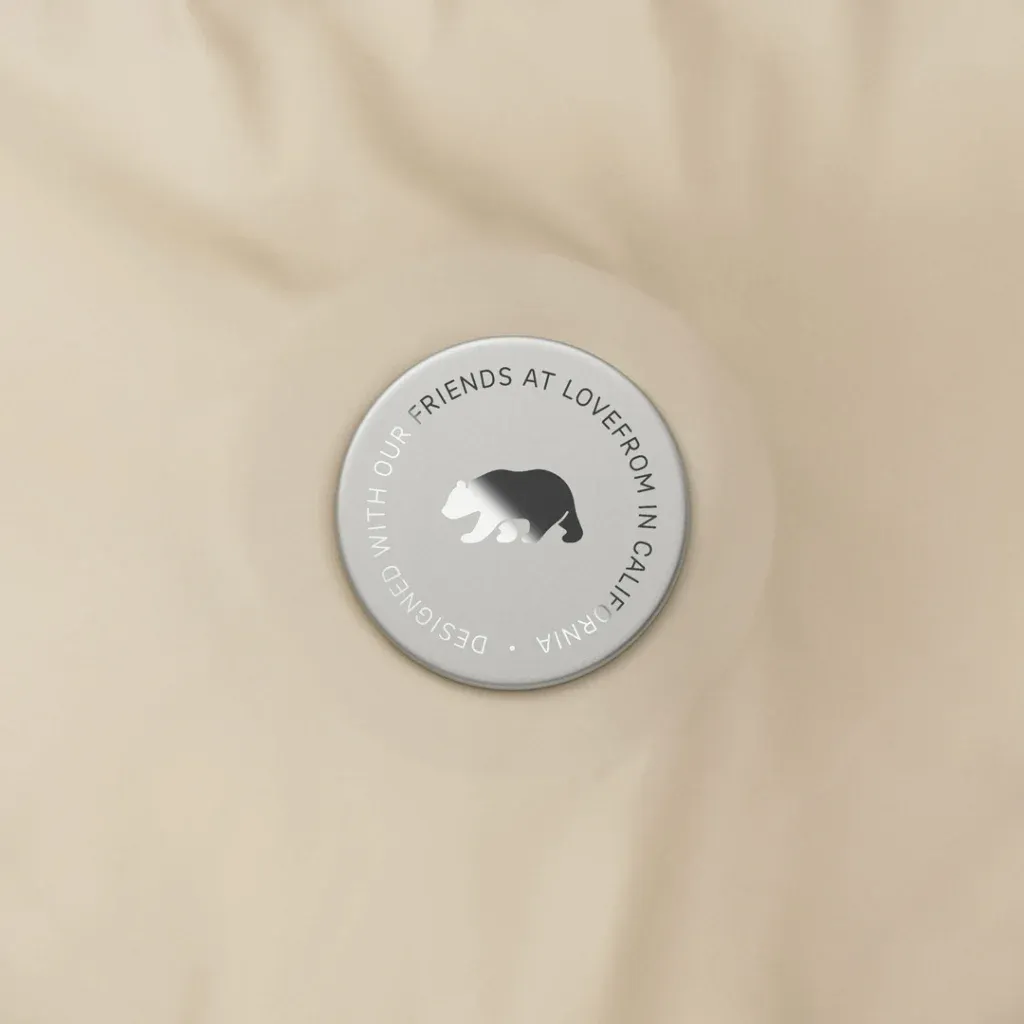A Brilliant Button is How it Works

While I linked to a story about the collaboration between LoveFrom and Moncler a couple weeks back (with the same basic idea for a headline, "Jony Ive Reinvents the Button"), this one focuses more squarely on the button that Jony Ive and team invented – the "duo button":
Modular jackets are nothing new in outdoor gear, but they often require fussing with zips or fasteners to link the layers together—a system that’s never as easy or elegant as that single zipper on the front of your coat. LoveFrom and Moncler agreed on the broad strokes of the three-shell system relatively quickly, and then LoveFrom tasked itself with figuring out how the shells would attach.
“How could you connect something where you didn’t have to pay attention? Velco’s sort of ingenious in that way. But I don’t think it’s satisfying,” Ive says.
Explorations into all methods of attachment followed. “I tried to do better zippers, and zippers are really hard,” Ive says with a laugh. The team eventually homed in on buttons, and dug deep into their history and permutations.
This led them to the breakthrough: magnets. Two magnets, to be precise:
The base of the button lives on the Moncore. That button is completely solid (like a coin) when you touch it, but an inner ring teases another function that’s impossible to discern by touch. The other half of the button—what you might consider the buttonhole—lives on the shells. It’s shaped like a little donut.
When the donut lands on the base, that’s when the magic trick happens. Two magnets inside the donut pull up a piston from the button base, which fills the donut hole and joins the two pieces with a satisfying click sound. (Why doesn’t the base piston flap or jangle? It actually has a weaker magnetic inside, which keeps it stuck to a small piece of steel in its core—until the more powerful donut magnets overpower it.)
When the button is joined, it couldn’t be easier to unbutton it, because the clothing button has transformed into a pressable button. You just push on the center piston that appears in the middle of the donut and it comes undone.
That does sound like a rather ingenious way to create this type of swappable system. It's also, in true Ive fashion, a bit fun:
Of course, what you lose in this technical explanation is the most satisfying, addictive, fidget-spinner of a button I’ve ever used. As Ive, Ruffini, and I talk, I notice that we’re each holding the duo button, compulsively clicking it together and pushing it apart again and again.
Naturally, they also cared about how the connection sounded:
“When you put the shell on top, you don’t fix anything. It’s like, ‘pop pop pop!’” Ruffini says. Then the coat is connected and ready to go.
Obviously, this is not the cheapest way to design a button, but it sounds interesting enough that I wonder if it won't be used elsewhere. I'm certain LoveFrom has patented it, but it would be awesome if they licensed out the design to other high-end jackets and outerwear.
One more thing: the underside of the button features the new LoveFrom logo, a bear (for California) named "Montgomery" (after the street in San Francisco where their office is located). It's a nice little homage to "Designed by Apple in California". Also fun:
The top features the Moncler logo, which is a French cockerel.
While the two animals look a bit serious on the button, the brands will have more fun together as cartoons on materials, where Montgomery appears beside the longtime Moncler mascot, the Monduck. Their appearance includes comic-strip-like launder instructions inside the jacket (that double as an ode to the collaboration itself).

“There wasn’t some arrogant ambition around disruption. It was a very gentle, humble exploration.”
-- Yes, that's Jony Ive talking about the disruption of buttons.
